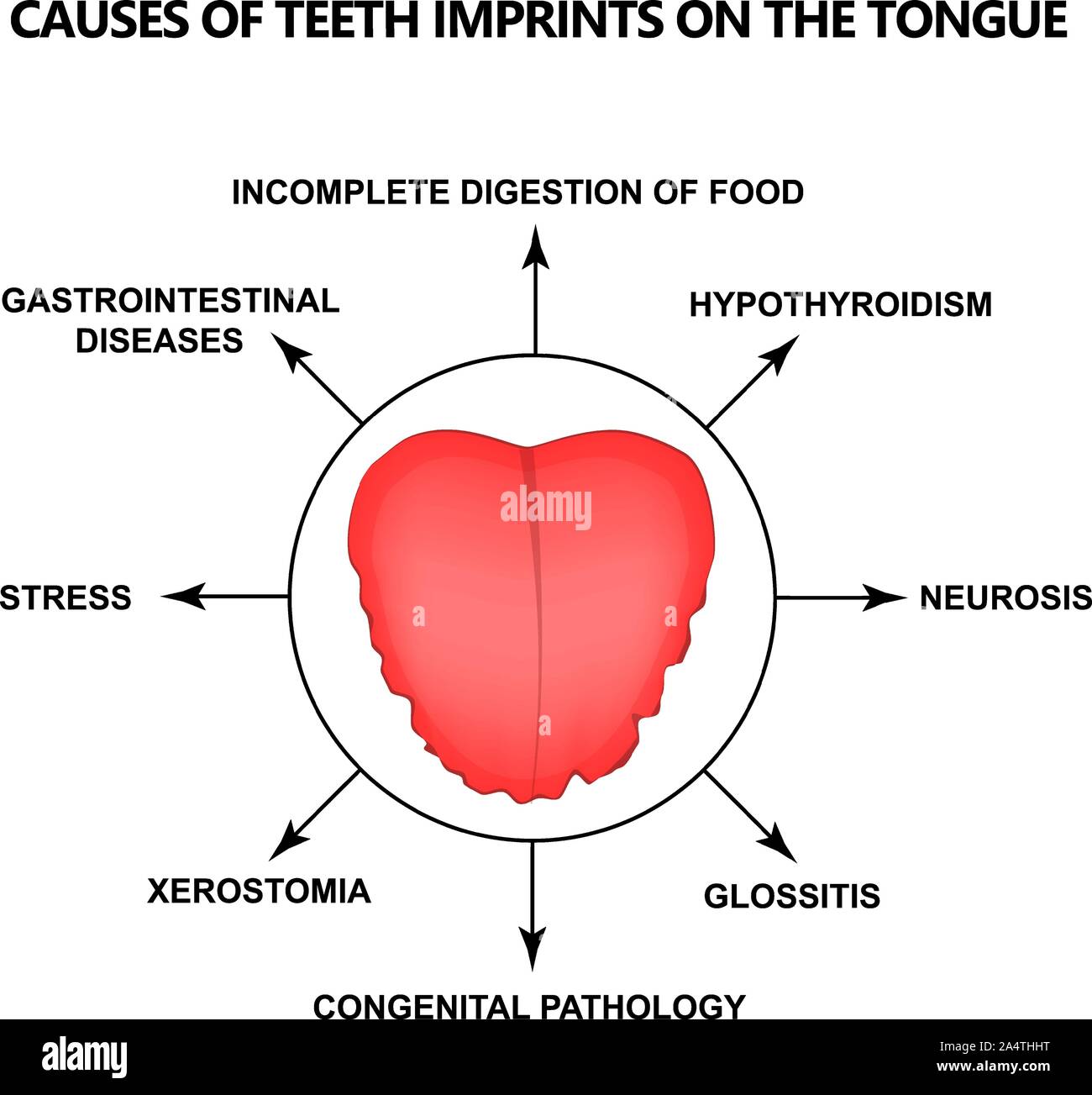What Causes Teeth Imprint On Tongue? Relief Tips

The phenomenon of teeth imprints on the tongue, also known as “tongue indentations” or “scalariform tongue,” is a relatively common occurrence that can be caused by a combination of factors. When the tongue is pressed against the teeth for an extended period, it can lead to the formation of temporary indentations or grooves on its surface. These indentations are usually harmless and can be relieved with some simple adjustments to oral habits and practices.
One of the primary causes of teeth imprints on the tongue is the habitual posture of the tongue against the teeth. Many people have a tendency to rest their tongue against their teeth, either due to stress, concentration, or as a matter of habit. This constant pressure can cause the tongue’s surface to mold into the shape of the teeth, resulting in noticeable indentations.
Another factor that contributes to teeth imprints is the alignment and structure of the teeth themselves. Individuals with misaligned teeth, overbites, or underbites may be more prone to experiencing tongue indentations due to the uneven distribution of pressure. Similarly, the presence of dental work such as braces or retainers can also influence the way the tongue interacts with the teeth, potentially leading to indentations.
Furthermore, oral habits like tongue thrusting, where the tongue pushes forward against the teeth, can exacerbate the formation of teeth imprints. This behavior is often subconscious and can be a result of Orofacial Myofunctional Disorders (OMDs), which affect the muscles of the face and mouth.
In addition to these factors, certain conditions such as dry mouth (xerostomia), nutritional deficiencies, and neurological disorders can affect the tongue’s texture and sensitivity, making it more susceptible to indentations.
To find relief from teeth imprints on the tongue, several strategies can be employed:
Tongue Exercises: Performing simple exercises like sticking the tongue out and then bringing it back in, or moving it from side to side behind the upper teeth, can help strengthen the tongue muscles and improve its posture.
Oral Habit Awareness: Being mindful of oral habits and making a conscious effort to avoid resting the tongue against the teeth can significantly reduce the occurrence of indentations.
Proper Dental Alignment: In cases where misalignment of teeth is a contributing factor, consulting an orthodontist for corrective measures can help alleviate the pressure on the tongue.
Maintaining Good Oral Hygiene: Keeping the mouth moist by drinking plenty of water and avoiding sugary or acidic foods can help maintain the health of the tongue and reduce the risk of indentations.
Avoiding Stress: Engaging in stress-reducing activities, such as meditation or deep breathing exercises, can help minimize the subconscious habits that lead to teeth imprints.
Nutritional Balance: Ensuring a balanced diet rich in vitamins and minerals, particularly those that promote oral health like vitamin B12, iron, and zinc, can help maintain the health and resilience of the tongue.
Regular Dental Check-Ups: Regular visits to the dentist can help identify any underlying issues with the teeth or oral habits that may be contributing to the problem, allowing for early intervention.
In conclusion, while teeth imprints on the tongue can be a source of discomfort or concern, they are often a symptom of broader oral habits or conditions that can be addressed through awareness, exercise, and professional dental care. By understanding the causes and incorporating relief strategies into daily life, individuals can reduce the occurrence of these indentations and maintain a healthier, more comfortable oral environment.
What are the primary causes of teeth imprints on the tongue?
+The primary causes include the habitual posture of the tongue against the teeth, the alignment and structure of the teeth, oral habits like tongue thrusting, and certain conditions such as dry mouth or nutritional deficiencies.
How can I prevent teeth imprints on my tongue?
+To prevent teeth imprints, practice tongue exercises, be aware of your oral habits, maintain proper dental alignment, keep your mouth moist, reduce stress, and ensure a balanced diet. Regular dental check-ups can also help identify and address any underlying issues.
Are teeth imprints on the tongue a sign of an underlying health issue?
+While teeth imprints on the tongue are often harmless, they can sometimes be a symptom of underlying conditions such as oral habits disorders, nutritional deficiencies, or certain neurological conditions. It's essential to consult a healthcare professional if the issue persists or is accompanied by other symptoms.
Can teeth imprints on the tongue be treated with home remedies?
+How long does it take for teeth imprints on the tongue to heal?
+The healing time for teeth imprints on the tongue can vary depending on the severity of the condition and the effectiveness of the relief measures taken. With proper care and adjustment of oral habits, noticeable improvement can often be observed within a few days to a week.
It's crucial to approach the issue of teeth imprints on the tongue with a holistic perspective, considering both the oral habits and the overall health of the individual. By combining awareness, prevention strategies, and professional care when necessary, individuals can effectively manage and prevent teeth imprints, contributing to a healthier and more comfortable oral environment.
In exploring the nuances of teeth imprints on the tongue, it becomes evident that this phenomenon is not merely a minor oral issue but can be an indicator of broader habits and conditions that require attention. Through education, self-awareness, and the right interventions, individuals can navigate this issue effectively, fostering not just oral health but overall well-being.

